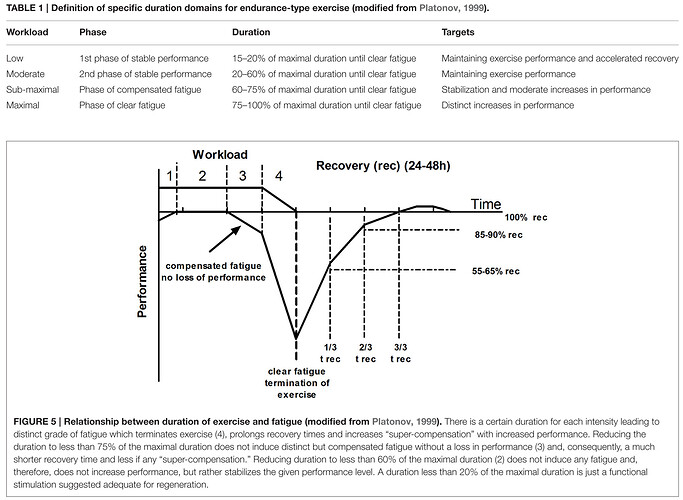On endurance rides, staying within my zone 1 of 3 HR, I have wondered about the proverbial “Goldilocks” point at which at a certain time of the ride, I trigger bring enough adaptation without going into excessive muscle damage that would affect greater progress by continuing to ride.
Trevor has mentioned that it is generally an individual dynamic; he has to push his body quite hard to get the benefits, while others can do with less. He mentioned Dr. Seiler was working on research in that direction.
I have been using RPE and seeing my average normalized power relative to a stable HR drop as an indicator during the rides. Lately, I have been tracking and started to pay a lot more attention to Performance Condition numbers on my Garmin, from Firstbeat, during the endurance rides, and using to gauge when my body had enough.
I noticed that it seemed to track well with the decoupling on Training Peaks. I start paying attention to it after around 30 minutes after I start riding. I have found that if if the negative numbers start rising quickly, I need to ride a shorter amount of time. I likely haven’t recovered from previous efforts.
There have been times when my legs felt good, the power to HR wasn’t very good, and Performance Condition numbers suggested even a short endurance ride was straining me, and at a quick rate. Beautiful as the days were, I forced myself to turn around and stop the rides way short at times, and try again the next day.
For me, it has made a big difference. The next day, my PC numbers would be much better, and the decoupling as well.
I wonder what experiences you have had, and any suggestions/insights about using this tool?

